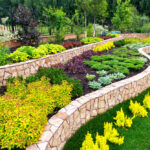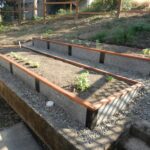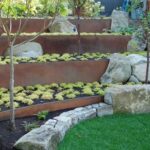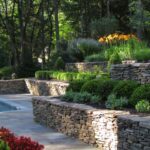Terraced landscaping is a popular design technique used in gardens and outdoor spaces to create levels and depths in the landscape. This method involves creating terraces, or flat areas, on a sloped surface to prevent erosion and optimize the use of space. Terraced landscaping allows for the cultivation of plants, flowers, and vegetables on different levels, adding dimension and visual interest to the overall design.
One of the main benefits of terraced landscaping is its ability to control erosion on sloped surfaces. By creating terraces, the soil is held in place and water is able to soak into the ground more effectively, reducing runoff and soil erosion. This not only helps to protect the landscape from damage but also ensures that plants have a stable environment in which to grow.
Another advantage of terraced landscaping is its ability to maximize the use of limited space. By creating multiple levels or terraces, gardeners can plant a greater variety of plants in a smaller area. This can be especially useful in urban settings or small yards where space is at a premium. Terraces also provide opportunities for creative planting designs and can help to break up a monotonous landscape.
Terraced landscaping can also provide a solution for areas with poor soil or drainage issues. By creating raised beds on terraces, gardeners can control the quality of the soil and ensure proper drainage for their plants. This can be particularly helpful in areas with heavy clay or sandy soils, as well as in locations with high water tables. Terraced landscaping allows for the customization of growing conditions to suit the specific needs of different plants.
In addition to its practical benefits, terraced landscaping can also enhance the aesthetic appeal of a garden or outdoor space. The multiple levels and varying heights of terraces create visual interest and can help to frame different areas of the landscape. By incorporating a variety of plants, flowers, and textures, gardeners can create a dynamic and visually stimulating design that changes with the seasons.
Overall, terraced landscaping is a versatile and effective technique for creating beautiful and functional outdoor spaces. Whether used to control erosion, maximize space, improve soil quality, or enhance aesthetics, terraces can transform a sloped surface into a dynamic and thriving garden. With careful planning and design, terraced landscaping can create a unique and inviting environment for both plants and people to enjoy.
















